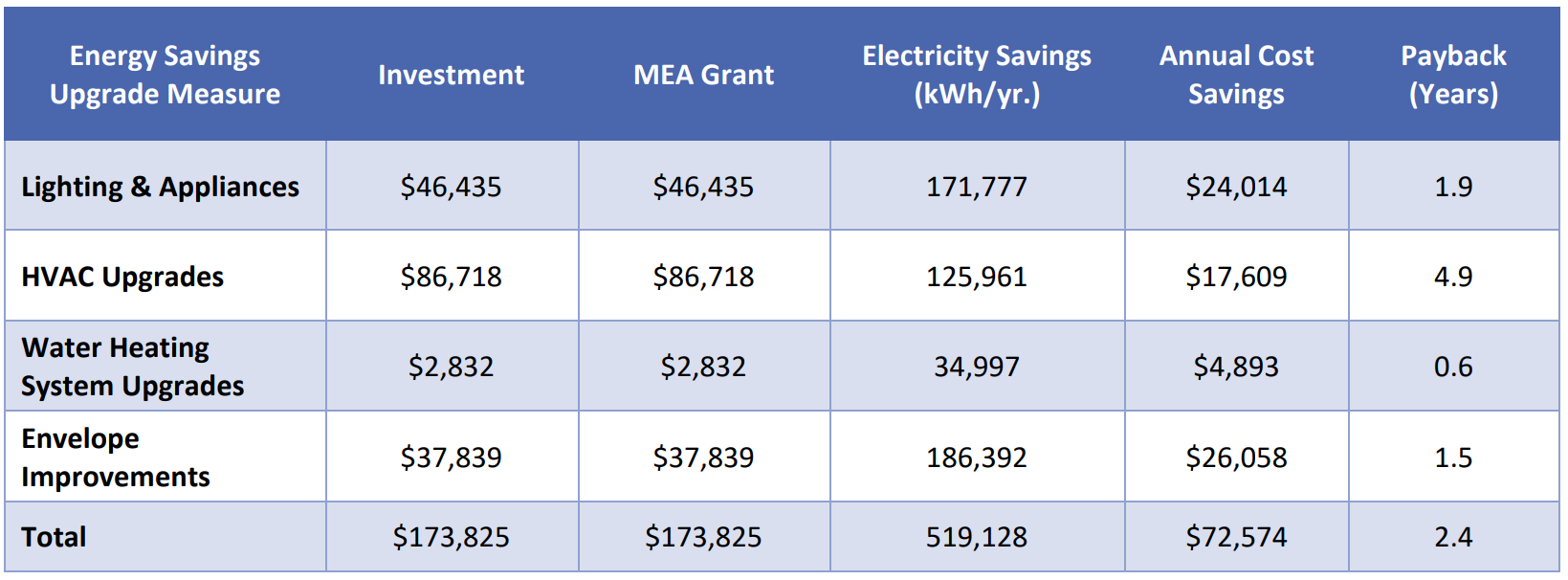Episcopal Housing Corporation
New construction projects in Maryland are built to meet the minimum energy code requirements. This is a good starting point but there are often additional opportunities for cost-effective energy efficiency upgrades. The Maryland Energy Administration (MEA) was able to increase the affordability of a new construction Low Income Housing Tax Credit Project with a 2017
FY17 Clean Energy Communities Low-to-Moderate Income Grant Program (LMI) award to Episcopal Housing Corporation (EHC) that enabled the incremental cost upgrades.
To meet the critical need for affordable housing in Baltimore County, EHC and Conifer Realty, LLC developed The Preserve at Red Run, an 87-unit new construction project in Owings Mills. The project is located close to high performing schools, is in close proximity to a robust employment center, and is located close to ample transportation options. The rent for the affordable units will range from $173 to $1,200 monthly, with an average rent of $825 in a neighborhood with significantly higher rents. The MEA LMI program invested $173,825 in energy upgrades to ensure that the total monthly occupancy costs for the residents remain affordable and within their budget. According to EHC Executive Director Daniel McCarthy, “the investment of the LMI funding acts as an operating subsidy for our residents, allowing them to lower their utility bills and invest the saved funds in their education, childcare and family expenses.” To encourage new construction to install more energy efficient measures than minimum code requirements, the LMI grant program covers the incremental cost of system upgrades. For a new construction project, only the
incremental purchase cost of upgrading to a higher level of energy efficiency is reimbursable under the program.
For example, MEA will cover the cost of upgrading from a baseline efficiency heat pump (SEER 14) to a higher efficiency ENERGY STAR® certified heat pump (SEER 15+). MEA will not cover the labor cost of installing energy efficiency measures in new construction projects unless the Grantee can justify that the cost of installing the energy efficiency measure is more expensive than the cost of installing a baseline efficiency measure. Funds from the MEA program allowed the Red Run project to use LED lights in all dwelling units and common areas, install ENERGY STAR® refrigerators and HVAC equipment throughout the project, maximize insulation levels and air sealing, use WaterSense® faucets and showers, and upgrade to high efficiency windows throughout
the project. These upgrades will save the residents and the property management company over 500,000 kWh annually for the 40-year affordability commitment of the building.
Lowering utility costs is a key component to this new construction project. This mixed income community will provide 9 units for renters with incomes between 61 and 85 percent of area median income and 78 units for households with incomes between 15 and 60 percent of the area median income. Additionally, 13 of the units will be set aside for Persons with Disabilities. The increased level of air sealing and insulation will also have a positive impact on occupant’s health and safety.
Economically effective with an estimated simple payback of less than 3 years, environmentally effective with energy and emissions reductions, and equitable through integrating lower income, working families into the existing community, this project is offering opportunities and amenities that are much needed in the affordable housing sector. As a result the MEA Clean Energy Communities Low-to-Moderate Income Grant Program highlights this project as a case study for others to consider.
Episcopal Housing Corporation / Preserve at Red Run Energy Savings Table


 1-888-373-7888
1-888-373-7888 233733
233733